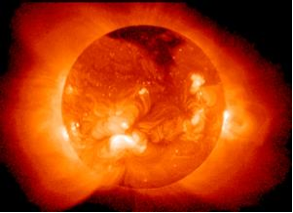
The Weekly Fusion: A Look at Current Advancements in Fusion Energy
│6.19.15-6.25.15│
The future of fusion is constantly being unfolded in front of our eyes, as every week there is some breakthrough in new technologies and designs in the nuclear fusion sector of energy. Since there is such a wealth of information, I have gathered and consolidated a list of articles geared toward the advancement of making fusion energy a reality, from within the past week.
X marks the spot: Researchers confirm novel method for controlling plasma rotation
Raphael Rosen / PHYS.org / June 23, 2015
Timothy Stoltzfus-Dueck, a physicist at the Department of Energy (DOE) Princeton Plasma Physics Laboratory (PPPL), has made a big leap in understanding plasma physics. The research performed was able to manipulate the intrinsic rotation through changing the X-Point’s location. The rotation has only been previously manipulated by heating the plasma.
Understanding the plasma’s rotation and its importance in nuclear fusion reactors is critical for the advancements in fully developing fusion energy for the ITER project and for commercial use.
Intrinsic Plasma Rotation and the X-Point
Rotation is important in plasma physics because it is the single variable to lead to the ultimate success of the fusion reactor. The rotation of the plasma particles can maintain the gas’s high temperature and instabilities by reducing turbulence.
The X-Point is the dividing point between the magnetically confined plasma and the leaked plasma. X-point was found, when moved horizontally, to disrupt the rotation of plasma particles. The plasma confined in the fusion reactor would either move in the opposite director, or its intrinsic rotation would be halted, because of the X-point movement.
Controlling the location and the direction of the X-Point has such a profound effect on the fusion reactor, as the X-Point can be treated like a “control knob” for the rotation and direction of the plasma particles.
MIT looking to advance carbon-free nuclear technology
Jaclyn Brandt / Fierce Energy / June 23, 2015
Two young researchers are pushing, in hopes to one day achieve the ultimate energy dream of fully understanding fusion energy. According to MIT News, two PhD candidates, Adam Kuang and Alex Creely, are looking at trying to understand two major questions and problems that arise when dealing with nuclear fusion.
Problem 1: Trying to understand plasma turbulence, so that a self-sustaining plasma will produce more energy than it consumes.
Problem 2: Trying to understand the best way to confine the plasma and to be able to extract heat safely in order to generate electricity.
Magnetic mirror holds promise for fusion
Chris Lee / ars technica / June 22, 2015
The polywell reactor is a design that is not as common as the tokamak reactor, as it arranges the magnetic fields differently. The polywell reactor confines the plasma to one place by creating a magnetic box. In contrast, the tokamak reactor uses a magnetic field that causes the plasma to form a doughnut shape.
Since the polywell reactor has a different design than the tokamak, the magnetic field is also different. The magnetic field points out away from the center, and so the plasma follows in the outward direction. Since the electrons want to escape, additional high energy electrons are inserted into the plasma, thus slowing the escape of electrons from the reactor.
This containment of plasma particles within the polywell reactor produces a concentration of high beta (very dense) particles, thus producing a boundary between the plasma and the magnetic field. The boundary formed acts like a mirror for the charged particles in the plasma, thus showing the rate of ion escape.
This fusion energy research is important, because it shows that high-density plasma excludes a magnetic field and traps itself in the polywell design.





